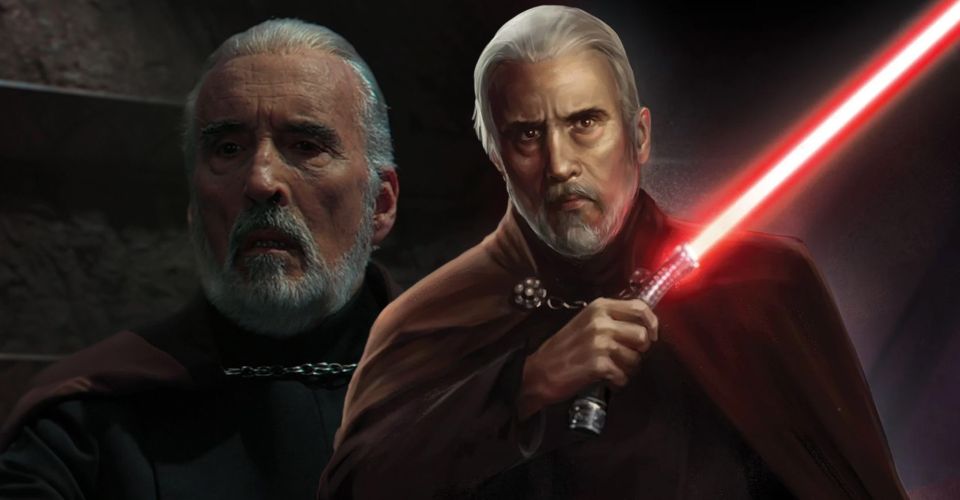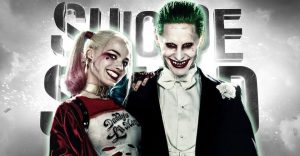Star Wars: Why Count Dooku Uses A Curved Lightsaber

Count Dooku wields a rare lightsaber in the Star Wars universe, one that features a distinctive curved hilt. The unique design is, in part, a product of Sir Christopher Lee’s on and off-screen experience with a sword. The distinguished English actor first portrayed Dooku in Star Wars: Episode II – Attack of the Clones before reprising his role in Star Wars: Episode III – Revenge of the Sith. Lee brought an immense skill and knowledge of swordplay to his role that heavily influenced his character’s weapon, the unique design of which has come to embody an entire form of lightsaber combat.
Dooku trained in the Jedi arts as an apprentice, or Padawan, under Jedi Master Yoda before turning to the dark side and claiming the title Count of Serenno. When he was still a Jedi Master, Dooku set aside the lightsaber he had used as a Padawan and began studying the Jedi Archives to create a superior weapon. He personalized the lightsaber’s design with a curved hilt that better suited his combat technique, resulting in a unique lightsaber unlike any other fashioned at the time that he would continue to use even as a Sith Master.
According to the Jedi Archives, there are seven forms of lightsaber combat, each developed to overcome the prevalent threats of their age. Count Dooku is a master of Form II: Makashi, the most dueling-centric of the seven forms developed during an era of routine engagements with Darksiders and rogue Jedi. Makashi relies on precision swordplay and emphasizes fluid motion with its users relying on timing, accuracy, and skill rather than strength to defeat their opponents. The curved hit of Dooku’s lightsaber accentuates this form, favoring long, elegant moves and deftness of hand. Due to the combat form’s emphasis on blade manipulation, Makashi practitioners often wielded lightsabers specialized for one-handed moves, something for which Dooku was renown. The curved-hilt lightsaber is the most prominent weapon for this purpose as it fits better in the palm, granting its user better blade control while simultaneously allowing for greater precision and strength.

Although the curvature of Count Dooku’s lightsaber hilt traces its origins to earlier concepts of Star Wars villains, the design was also heavily influenced by Sir Christopher Lee and his experience in swordplay. In addition to being a gifted actor and singer, Sir Christopher Lee was a master swordsman and champion fencer. It’s no coincidence that his character’s combat form of choice, Makashi, shares many similarities with fencing, including stance, footwork, one-handed movements, and even curved hilts. Dooku’s lightsaber is based on the real-life pistol grips of fencing’s light thrusting weapons, which, like the lightsaber’s curved-hilt, favor finesse over power. The second, considerably rarer, weapon type of the Makashi form is the Lightfoil, a specialized lightsaber that shares its name with one of fencing’s three weapon types, the foil. A predecessor to fencing blades, the rapier, also influenced Dooku’s lightsaber as did other historical weapons like the Filipino Moro Barong with its curved handle, an inspiration attributed to Art Department Assistant Roel Robles.
Lightsabers remain a cornerstone of the Star Wars universe, but while new colors and designs repeatedly appear, curved-hilts like that of Count Dooku’s distinctive weapon are a rare sight. Dooku’s Makashi form represents a bygone era, a simpler time before blasters and other advanced weaponry were encountered on the battlefield. As the most prominent weapon of the antiquated Makashi style, curved-hilt lightsabers are scarcely used in more modern Star Wars battles. Though the design may be dated, Dooku cherished his personalized weapon and considered himself a sophisticated duelist, realizing that certain contests are decided by one’s skill with a lightsaber rather than knowledge of the Force. Few were more skilled than Sir Christopher Lee’s Count Dooku.
- Rogue Squadron (2023)Release date: Dec 22, 2023
About The Author

















